Cricket Is a Bit Like Baseball … But Different
Here's help with this sticky wicket
Cricket is a bit like baseball, I’m told. There’s a ball and a bat. The ball’s slightly larger than a baseball, and the bat’s curved, sort of like a scoop or jai alai cesta. The batter can be called “out,” but a team gets more than three outs in an “inning.” There are innings, but only two played on a grassy field. There the similarities end.
In other words, cricket is actually very, very different. In fact, you’ll probably be better off forgetting about baseball.
Cricket Basics
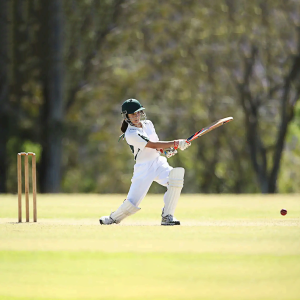 If all this seems confusing, well, it is.
If all this seems confusing, well, it is.
One challenge is the British nomenclature for the game’s terminology: wickets, overs, bowlers, et cetera. Another is the numbers of runs earned. England scored 849 runs in one game in 1930. The South African team scored 428 in the last World Cup. Sachin Tedulkar, a former Indian player, scored 34,357 runs in his career. Mind-blowing, even for Barry Bonds!
And yet another challenge is the different versions of cricket. A “test” match is played over five days, but the T20 — for 20 “overs” per side and lasting a few hours — has become the most popular. Other versions are also played.
Maybe Some History Will Help
Cricket started in England, possibly as early as the 13th century, and has since spread throughout the former British empire — India, South Africa, Australia and elsewhere (though only a minor sport in Canada). With 2.5 billion fans, cricket is considered the second-most popular sport in the world. Soccer is first.
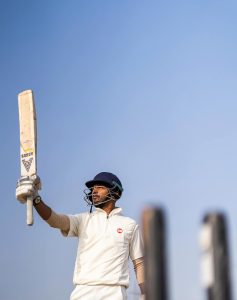 The Philadelphia region has a special connection to cricket. In the U.S., cricket began, formally at least, in 1833 right down the road at Haverford College. Haverford played its first match against the University of Pennsylvania in 1864 and won the Intercollegiate Cricket Association’s championship 19 times through 1924, after which the association was disbanded. This didn’t end cricket at Haverford, though. The team continued to play internationally. Today, Haverford is the only college in the country with a varsity cricket team.
The Philadelphia region has a special connection to cricket. In the U.S., cricket began, formally at least, in 1833 right down the road at Haverford College. Haverford played its first match against the University of Pennsylvania in 1864 and won the Intercollegiate Cricket Association’s championship 19 times through 1924, after which the association was disbanded. This didn’t end cricket at Haverford, though. The team continued to play internationally. Today, Haverford is the only college in the country with a varsity cricket team.
So, what happened?
Basically, cricket, which in the 19th century had been our country’s most popular sport, was replaced by baseball in American hearts and minds. In the early 20th century, baseball took off, while cricket, largely surviving around Philadelphia, was left in the dust. Only the local cricket clubs — Philadelphia, Germantown, Merion — and, of course, the Haverford team survived.
Meanwhile, cricket was flourishing in the rest of the world. In 1975, the first World Cup was held in London. The West Indies beat Australia in front of 26,675 fans. Recently, in 2023 the 13th edition of the World Cup was held in India, with 48 matches among 10 national teams and over 1.25 million live spectators. The final, with Australia outscoring India, 241–240, had over a half billion viewers worldwide. Take that, baseball!
Cricket’s Second Coming
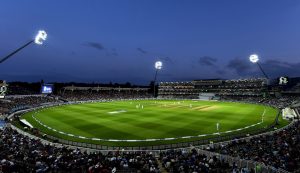
With the turn of the 21st century, the U.S. began to catch the cricket bug again. A wave of immigrants — primarily from India and Pakistan — began to revive cricket in the American mind. Locally, many cricket clubs emerged. All told, there were 13 cricket clubs playing T20 matches in the Greater Philadelphia Cricket League in 2023.
One club, the Titans, has home grounds in Malvern, while another is based in Villanova and yet another, the Stallions, is based in Exton. The Stallions came close to winning the league in 2023, losing to the NJ Challengers, 122–118.
Youth camps also began to pop up. Chester County Cricket Academy practices in Malvern in summer and at the All-Star Academy in Downingtown in winter. And the 22 Yards Cricket Academy was started in Chester Springs — more evidence of cricket’s reemergence.
Play and Terms — The Short Version
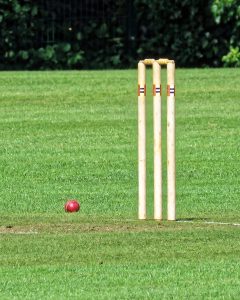
Although cricket is often compared with baseball, frankly, the comparison doesn’t help American spectators much.
For example, there’s no home plate or bases. Instead, there’s a wicket — two of them — each consisting of three vertical “stumps,” with two “bails” resting horizontally on top. They’re at each end of the 66-foot flat area called the pitch.
The batter — traditionally called a “batsman” — is dressed, more or less, like a baseball catcher: helmet, face guard, gloves, pads. He’s supposed to “protect the wicket.” The “wicket keeper” belongs to the opposing team and stands well behind the batter.
The ball is hurled toward the wicket by the “bowler” — like a pitcher — but the bowler throws the ball with a single bounce and tries to hit the wicket, behind the batter. If the bowler succeeds, it’s called an out. The batter gets one — and only one — out, then must leave the field.
In most cases, though, the batter doesn’t leave, usually because the ball has been bowled wide of the wicket or the batter has hit the ball. It really doesn’t matter which way the batter hits it. There are no fouls. There’s a 360-degree field, shaped like an oval, about 475 feet in diameter (390 feet for women).
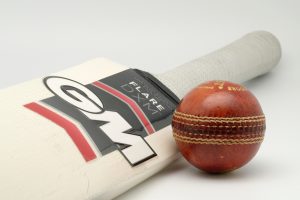
The field is marked by a “boundary,” basically a low line or fence. If the ball is hit on a fly over the boundary, the batter scores six runs. If the ball reaches the boundary, but on less than a fly, that’s worth four runs. If the ball doesn’t reach the boundary … it gets complicated.
For instance, if the ball is caught in the air — a fly — that’s an out. The ball may be caught by a fielder — there are 11 total on a team— but no one, except the wicket keeper, has a glove. Everyone else must catch the ball bare-handed. Injuries to the fingers and hands are common.
Another possibility is what would be a ground ball in baseball. The job of the fielder is to fetch the ball and return it to the wicket. If he hits the wicket before the runner reaches it, that’s also an out.
There are several other ways to get out. And several other ways to score runs. But those are the for another article.
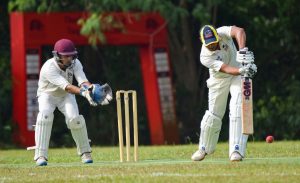 It’s worth noting that two runners are involved in all this, the batter and a runner. The non-batting runner starts at the opposite end of the pitch from the batter When a ball is hit, each runner tries to make it to the other end of the pitch before the wicket is knocked down. The batter carries his bat, and if the batter or his bat crosses the “crease” — a white line drawn on the pitch — he’s safe and scores a run. In fact, if he beats the ball, he can run back and score another run. And another. And another …
It’s worth noting that two runners are involved in all this, the batter and a runner. The non-batting runner starts at the opposite end of the pitch from the batter When a ball is hit, each runner tries to make it to the other end of the pitch before the wicket is knocked down. The batter carries his bat, and if the batter or his bat crosses the “crease” — a white line drawn on the pitch — he’s safe and scores a run. In fact, if he beats the ball, he can run back and score another run. And another. And another …
That is, assuming the batter has chosen to run at all. Think about that for a moment. He’s not required to run. He can hit the ball and not run if he thinks the ball will be returned to the wicket before he crosses the crease.
By the way, unlike baseball, there are no bases, no base-stealing, no pitcher’s mound, no balls or strikes, no walks or strikeouts. An inning continues, in general, until all the batters have had a turn.
Also note that the bowler is rotated after six bowls, called an “over.” He can return after another has bowled, but, after six, he’s replaced by a different bowler.
And a final note: there will be 10 batters in an inning, no matter how many outs are made. A single batter can bat … forever. It’s not unheard of for a single batter to score a hundred — called a “century” — or more points.
Go to a Match
You may be ready to go to a match. Maybe. You’ll still be a bit baffled, I suspect. Maybe bring someone who knows what’s going on. Maybe read up.
Still think it’s a sticky wicket? There’s a Cricket for Dummies available. In any case, you should bring a spot of tea. And maybe some gin.
Special thanks to Kamran Khan, Cricket Coach at Haverford College, Tahir Maqsood, Chair of the Cricket Committee of the Merion Cricket Club, Rajesh Kambhardar, Founder and Captain of the Exton Stallions, and Sourav Das, a Founder and President of the Malvern Titans.

Local cricket clubs participate in the Greater Philadelphia Cricket League. The Stallions, the Titans and Villanova will play mostly on Saturdays, May through October, in Exton. See CricClubs.com/GPCL for a schedule.
Or you can spot some cricket on weekends at Haverford College. See the college athletics website for a schedule.
If you’d like to step up to the majors, then check out the Philadelphia International Cricket Festival, planned for May 2 though 5, played at five venues, including the Merion Cricket Club and Haverford College. See CricketFestival.com. Major League Cricket began last year, with six teams, from New York, Dallas, Los Angeles and elsewhere.
But, if you really want to see big-time cricket — the World Cup — you’ll have to travel and pay. From June 1–29, the World Cup will feature the first matches played in the U.S., played at three U.S. venues (in New York, Florida, Texas). See 55 matches in all — 16 in the U.S. and the remainder at several locations in the West Indies.
